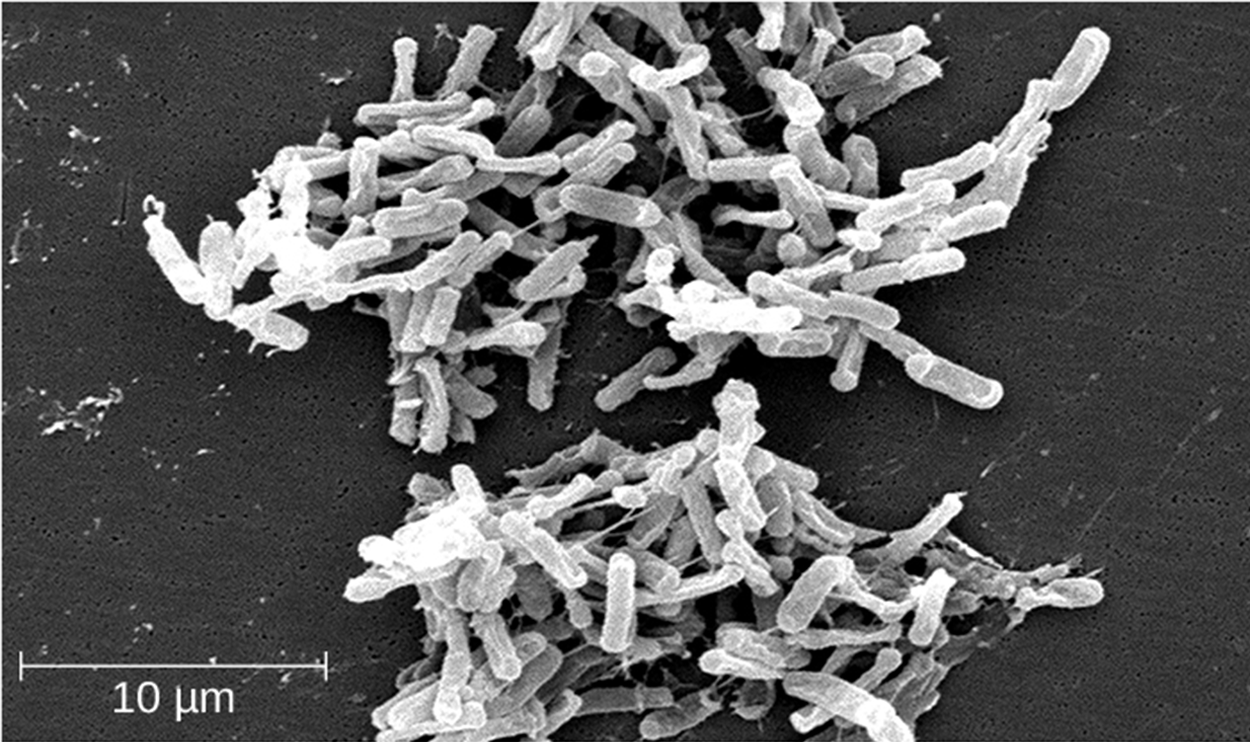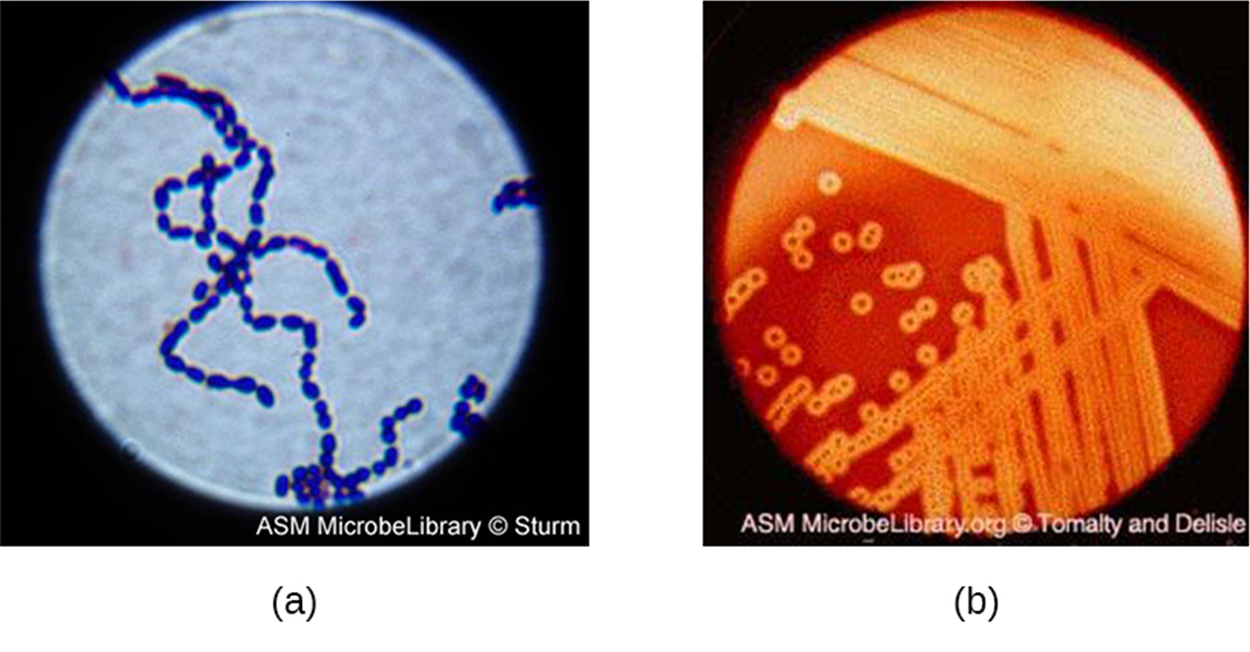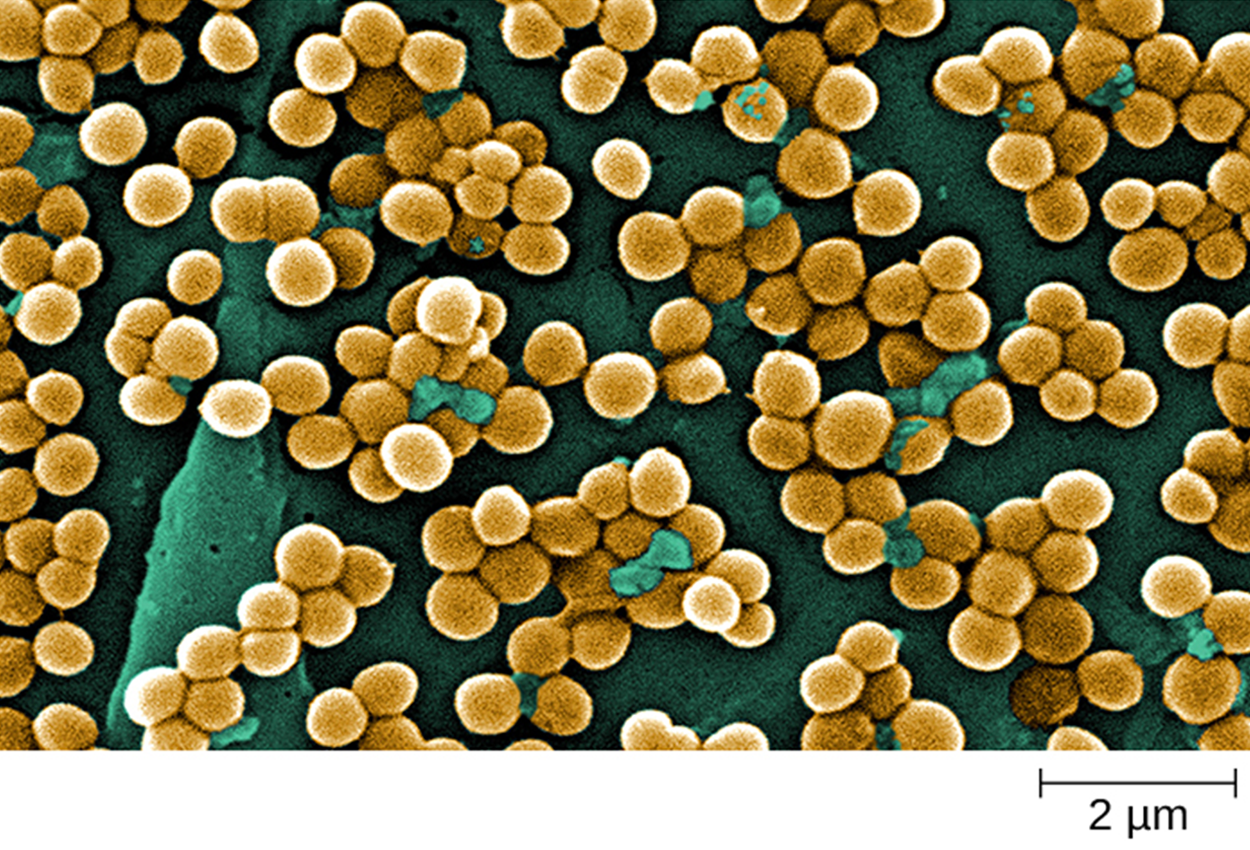Table of Contents |
Genetic analyses have become very important in classifying prokaryotes. In particular, DNA and 16S ribosomal RNA (rRNA) subunits are often used. You will learn more about these analyses in future lessons.
DNA and RNA are nucleic acids produced by joining many individual nucleotides together. Each nucleotide consists of a sugar, a phosphate group, and a nitrogenous (nitrogen-containing) base. You will learn more about nucleic acids and nucleotides in other lessons. For now, it is important to understand that there are different nitrogenous bases that can be arranged in different sequences to convey information.
EXAMPLE
The five bases are adenine (A), guanine (G), cytosine (C), thymine (T), and uracil (U). DNA contains T and RNA contains U, so there are four bases in each nucleic acid.The gram-positive bacteria have traditionally been divided into two groups: the high G+C positive bacteria and the low G+C positive bacteria. The high G+C bacteria have more than 50% guanine and cytosine nucleotides in their DNA, whereas the low G+C gram-positive bacteria have less than 50% guanine and cytosine nucleotides in their DNA.
Some of the gram-positive bacteria are medically important. You will learn more about bacterial diseases in other lessons.
The Actinobacteria are highly diverse in appearances, habitats, and metabolic types. Some are oval rods (coccobacilli), whereas others are large and branching. Most live in the soil, but some are aquatic. The majority require oxygen. One distinctive feature of this group is the presence of several different peptidoglycans in the cell wall.
The genus Actinomyces is a well-studied representative of Actinobacteria. These bacteria play an important role in soil ecology. Some are human pathogens.
EXAMPLE
Some are found in the mouth and associated with gum disease and oral abscesses.The genus Mycobacterium is represented by bacilli (rod-shaped bacteria) covered with a mycolic acid coat. This waxy coat protects the bacterium from some antibiotics, prevents them from drying out, and blocks penetration by Gram stain reagents. For this reason, acid-fast staining is used.
EXAMPLE
Mycobacterium tuberculosis is the causative agent of tuberculosis, which primarily affects the lungs but can affect other body parts as well. Antibiotic-resistant tuberculosis is a major public health concern.EXAMPLE
M. leprae is the causative agent of Hansen’s disease (leprosy). This chronic disease impacts peripheral nerves and the integrity of the skin and mucosal surface of the respiratory tract.Bacteria in the genus Corynebacterium contain diaminopimelic acid in their cell walls. Cells may contain metachromatic granules that are useful for identification. Most are pathogenic, such as the causative agent of diphtheria, C. diphtheriae. This species produces a toxin that forms a pseudomembrane in the patients’ throat, causing swelling, difficulty breathing, and other species.
The genus Bifidobacterium consists of filamentous anaerobes, many of which are commonly found in the gastrointestinal tract, vagina, and mouth. Species of this genus constitute a substantial part of the human gut microbiota and are frequently used in yogurt production and as probiotics (which are consumed to add microbes to the body to contribute to the healthy microbiota).
The images below show micrographs of Actinomyces israelii in part a, Corynebacterium diphtheria in part b, and Gardnerella vaginalis in part c. G. vaginalis is gram-variable because it does not show consistent results when Gram stained, but it is classified in the high G+C gram-positive group based on genetic analysis.

The low G+C gram-positive bacteria include a variety of species. One major genus is Clostridium. Members of this genus cause gangrene, botulism, and tetanus. A species formerly included in this genus, Clostridiodes (Clostridium) difficile, causes potentially dangerous inflammation of the large intestine and is of particular concern in hospitals. The micrograph below shows a clump of rod-shaped C. difficile cells.

The order Lactobacillales includes bacilli and cocci in genera Lactobacillus, Leuconostoc, Enterococcus, and Streptococcus.
Streptococcus species, often called streptococci, are responsible for a variety of human infectious diseases.
EXAMPLE
Streptococcus pyogenes is the causative agent for strep throat (bacterial pharyngitis) and some skin infections, including severe necrotizing fasciitis (known as flesh eating disease). They form chains of spherical cells (cocci) as shown in part a of the image below. When grown on blood agar, they produce clear areas as shown in part b of the image below. These clear areas are formed when they digest the blood in the agar.
Some streptococci, including S. pyogenes, are classified in Lancefield groups. S. pyogenes belongs to the Lancefield group A, β-hemolytic Streptococcus. Some other streptococci are not classified in Lancefield groups. You will learn more about Lancefield groups in other lessons that discuss streptococcus diseases.
Class Bacilli includes morphologically diverse bacteria, despite its name. Two particularly important genera within this class are Bacillus and Staphylococcus.
Bacteria in the genus Bacillus are rod-shaped and can produce endospores. Some are used in industries (e.g., for antibiotic production).
EXAMPLE
Bacillus anthracis is the pathogen that causes anthrax, a severe disease that affects wild and domesticated animals and can spread from infected animals to humans. This disease can infect the skin, forming ulcers, or other organs. Its respiratory form is particularly dangerous. Bacillus cereus is a closely related species that can cause food poisoning.Staphylococcus bacteria are spherical (cocci), even though they are classified in class Bacilli. They form clusters of spherical cells, as shown in the micrograph below. They are nonmotile.

EXAMPLE
Staphylococcus epidermidis is found on human skin and is generally nonpathogenic, although it can cause infections if introduced into the body and in immunocompromised patients.EXAMPLE
Staphylococcus aureus is a major cause of human infections. It causes a variety of skin infections. Some strains produce a toxin that causes intestinal inflammation called staph food poisoning. Some strains produce the toxin responsible for toxic shock syndrome, which can result in cardiovascular collapse and death.Many strains of S. aureus have developed antibiotic resistance. Some antibiotic-resistant strains are designated as methicillin-resistant S. aureus (MRSA) and vancomycin-resistant S. aureus (VRSA). These strains are some of the most difficult to treat because they exhibit resistance to nearly all available antibiotics. Because they are so difficult to treat, infections can be lethal. MRSA and VRSA are contagious and pose significant threats in healthcare facilities and other places where there are large populations of elderly, bedridden, and/or immunocompromised patients.
Mycoplasma species lack a cell wall and therefore cannot stain as gram-positive, but they are included within the low G+C gram-positive bacteria based on other characteristics. These bacteria have small cells and are pleomorphic, meaning that they can take on a variety of shapes.
EXAMPLE
Mycoplasma pneumoniae is the causative agent of a type of pneumonia that is typically less severe than other forms. This type of pneumonia is sometimes called walking or atypical pneumonia.Source: THIS TUTORIAL HAS BEEN ADAPTED FROM OPENSTAX “MICROBIOLOGY.” ACCESS FOR FREE AT openstax.org/details/books/microbiology. LICENSE: CC ATTRIBUTION 4.0 INTERNATIONAL.
REFERENCES
NCBI Taxonomy to include phylum rank in taxonomic names. National Library of Medicine. Retrieved August 16, 2022, from
ncbiinsights.ncbi.nlm.nih.gov/2021/12/10/ncbi-taxonomy-prokaryote-phyla-added/.
Oren, A., Arahal, D. R., Rosselló-Móra, R., Sutcliffe, I. C., & Moore, E. (2021). Emendation of Rules 5b, 8, 15 and 22 of the International Code of Nomenclature of Prokaryotes to include the rank of phylum. International journal of systematic and evolutionary microbiology, 71(6), 10.1099/ijsem.0.004851 doi.org/10.1099/ijsem.0.004851.
Parker, N., Schneegurt, M., Thi Tu, A.-H., Lister, P., & Forster, B. (2016). Microbiology. OpenStax. Access for free at openstax.org/books/microbiology/pages/1-introduction.